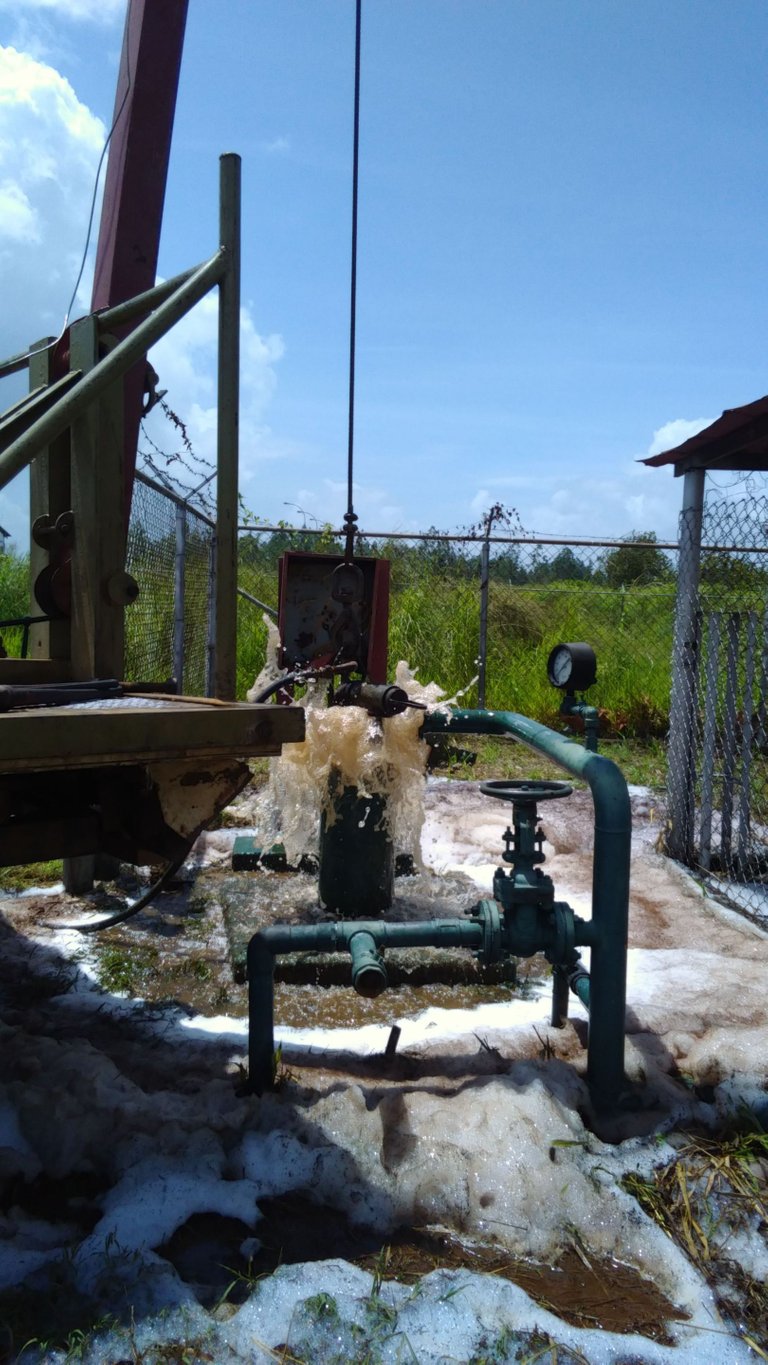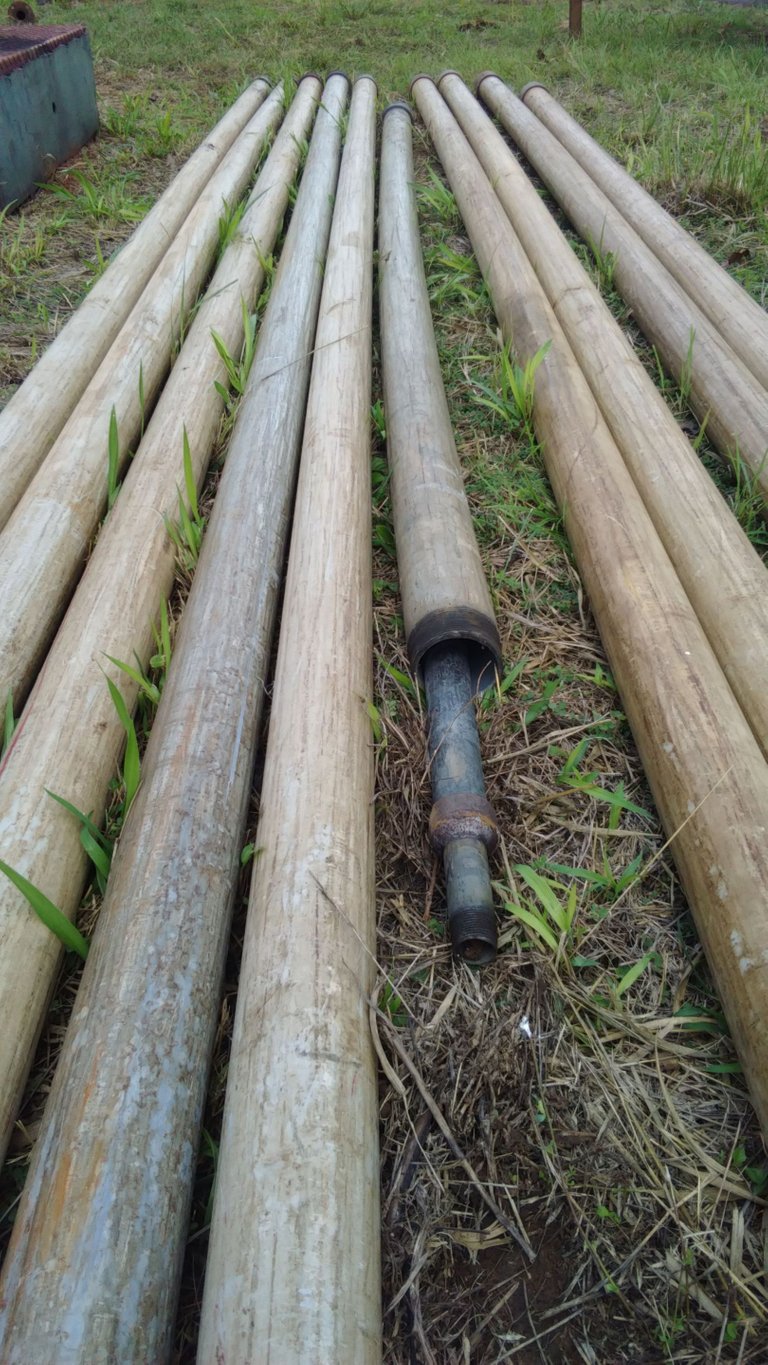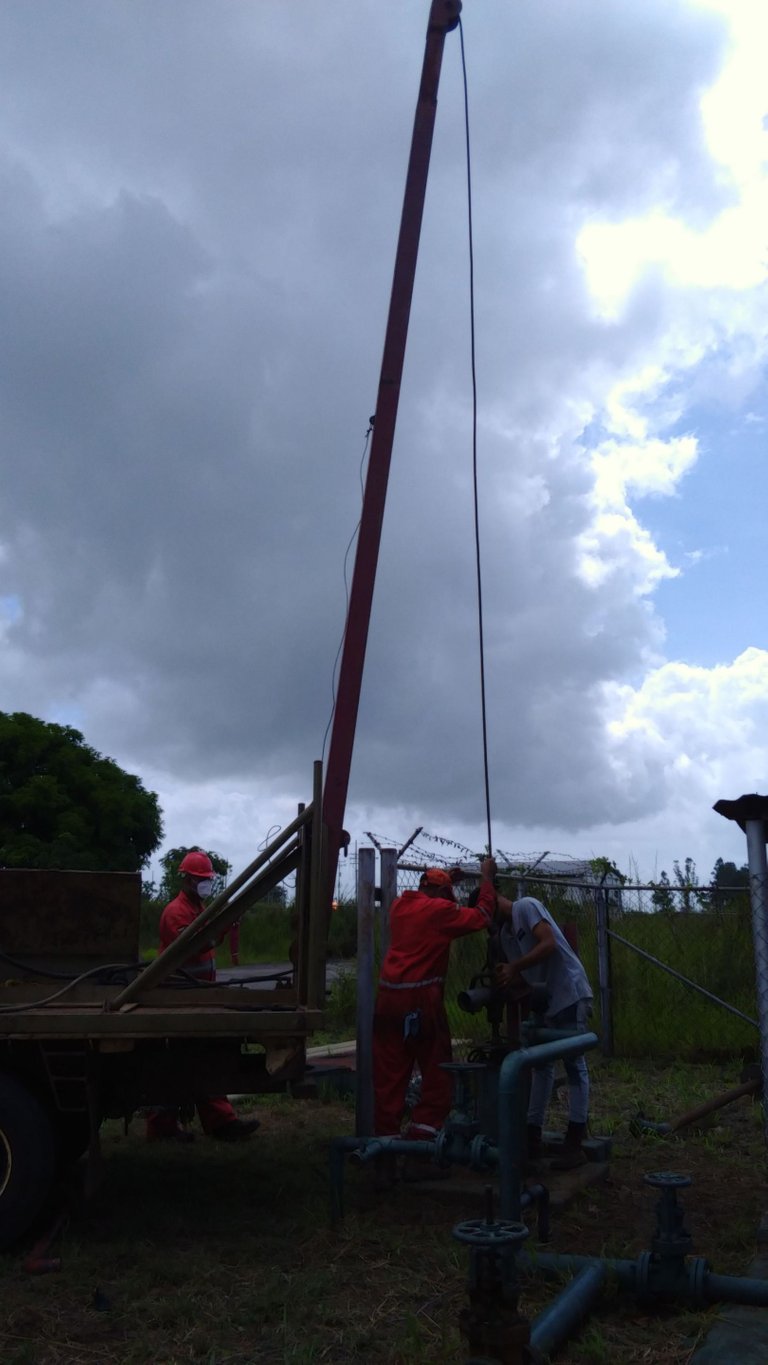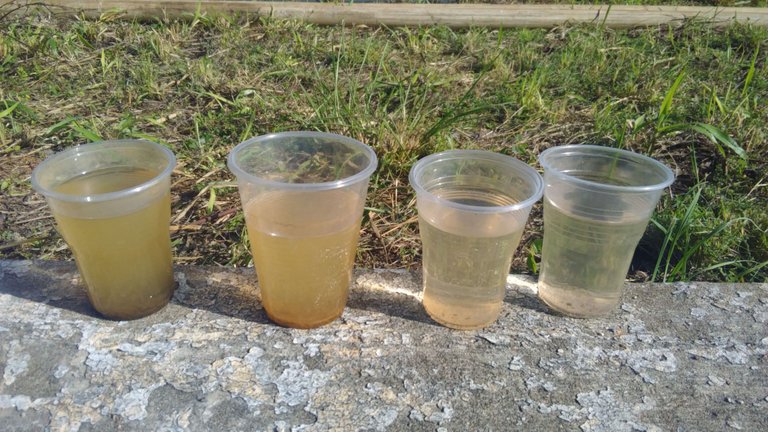PRUEBA DE UN POZO ACUÍFERO PARA USO INDUSTRIAL/TESTING AN AQUIFIER WELL FOR INDUSTRIAL USE.
Supervising the maintenance of a water well at my work site, that was the responsibility that I assumed, while the operators carried out their work. In addition, he had to keep a record of the operations carried out.
• Comply with the safety regulations during the operation of the wells.
• Coordinate and supervise the installation of the pumping equipment.
• Coordinate and supervise the disinfection of the wells.
• Take water samples for quality analysis.
• Remain on the job site permanently.

El ciclo hidrológico del agua es un proceso continuo en el cual el agua de la tierra se mueve en sus diferentes estados a través de los océanos, la atmósfera, la superficie del suelo y el subsuelo. Este ciclo no tiene principio ni fin. El agua toma la energía de los rayos del sol para transformarse en los tres estados y se desplaza por la acción de la gravedad. Parte del agua que se infiltra en el suelo es utilizada por las raíces de las plantas en su proceso de transpiración y regresa a la atmósfera, el resto se sigue infiltrando en el subsuelo hasta llegar a unos depósitos subterráneos llamados acuíferos por donde circula a través de poros y grietas hasta finalmente llegar al mar, completando el ciclo hidrológico. Para planificar en forma ordenada el aprovechamiento de las aguas subterráneas y en general del recurso agua de una región, es necesario evaluar los recursos disponibles en cuanto a cantidad y calidad. Para lograr este objetivo se debe realizar un "estudio hidro-geológico" regional o local el cual comprende varias etapa.
The hydrological water cycle is a continuous process in which the earth's water moves in its different states through the oceans, the atmosphere, the surface of the ground and the subsoil. This cycle has no beginning and no end. Water takes the energy from the sun's rays to transform into the three states and moves by the action of gravity. Part of the water that infiltrates the soil is used by the roots of the plants in their transpiration process and returns to the atmosphere, the rest continues to infiltrate the subsoil until it reaches underground deposits called aquifers through which it circulates through pores and cracks until finally reaching the sea, completing the hydrological cycle. To plan in an orderly way the use of groundwater and in general the water resource of a region, it is necessary to evaluate the available resources in terms of quantity and quality. To achieve this objective, a regional or local "hydro-geological study" must be carried out, which comprises several stages.

Prueba de bombeo
La prueba de bombeo tiene dos objetivos:
- Calcular los parámetros hidráulicos de los acuíferos, Transmisividad (T) y Coeficiente de Almacenamiento (8) para conocer su comportamiento hidráulico.
- Calcular los parámetros hidráulicos del pozo: abatimiento (s), caudal (Q) y capacidad específica (Q/s) para establecer el rendimiento del pozo y seleccionar el equipo de bombeo.
El equipo necesario para realizar una prueba bombeo es el siguiente:
• Una bomba con motor sumergible o motor en la superficie.
• Un dispositivo de aforo para medir el caudal del pozo.
Antes de iniciar la prueba de bombeo se mide el nivel estático y luego de iniciado el bombeo se miden los niveles de bombeo con respecto al tiempo a partir del inicio de la prueba. Al principio los niveles de agua en un pozo bajan rápidamente, luego su descenso se va haciendo lento y trata de estabilizarse, por esto, al iniciar el bombeo las medidas se deben hacer en cortos intervalos de tiempo, luego se van espaciando en la medida en que avance la prueba.
• Un pozo profundo es una obra de captación de aguas subterráneas que se utiliza para el abastecimiento público en muchas poblaciones.
• Las partes principales de un pozo son: El hueco perforado, la tubería de revestimiento, los filtros de admisión del agua, el filtro de grava, el sello sanitario, el anclaje y la base de apoyo de la bomba.
** The pumping test has two objectives: **
- Calculate the hydraulic parameters of the aquifers, Transmissivity (T) and Storage Coefficient (8) to know their hydraulic behavior.
- Calculate the hydraulic parameters of the well: abatement (s), flow rate (Q) and specific capacity (Q / s) to establish the well performance and select the pumping equipment.
The equipment needed to perform a pump test is as follows:
• A pump with a submersible motor or surface motor.
• A gauging device to measure the flow of the well.
Before starting the pumping test, the static level is measured and after starting the pumping, the pumping levels are measured with respect to time from the start of the test. At first the water levels in a well drop rapidly, then its descent becomes slow and it tries to stabilize, for this reason, when starting the pump, the measurements must be made in short intervals of time, then they are spaced as far as possible. let the test progress.
• >A deep well is a groundwater collection work that is used for public supply in many towns.
• >The main parts of a well are: The drilled hole, the casing, the water inlet filters, the gravel filter, the sanitary seal, the anchor and the pump support base.

Los métodos de perforación de pozos más utilizados son los de rotación por los sistemas de circulación directa e inversa.
Las bases técnicas para diseñar un pozo son: Perfil litológico, registro eléctrico, análisis granulométricos de los acuíferos captados, calidad química del agua, rata de perforación del sondeo exploratorio, parámetros hidráulicos de los acuíferos y el caudal requerido.
El eficiente desarrollo de un pozo profundo bien diseñado garantiza su máximo rendimiento.
La prueba de bombeo de un pozo es un requisito indispensable para seleccionar el equipo de bombeo y calcular los parámetros hidráulicos de los acuíferos y del pozo mismo.Las bombas más utilizadas para extraer agua de un pozo profundo son las sumergibles y las turbinas de eje vertical. Las sumergibles tienen el motor eléctrico acoplado directamente a la bomba y se instalan sumergidas dentro del pozo y las turbinas tienen el motor en la superficie del terreno acoplado a la bomba mediante ejes verticales.
The most widely used well drilling methods are those of rotation by direct and reverse circulation systems.
The technical bases to design a well are: lithological profile, electrical log, granulometric analysis of the captured aquifers, chemical quality of the water, drilling rate of the exploratory well, hydraulic parameters of the aquifers and the required flow.
The efficient development of a well-designed deep well guarantees its maximum performance.
The pumping test of a well is an essential requirement to select the pumping equipment and calculate the hydraulic parameters of the aquifers and of the well itself.The most commonly used pumps to extract water from a deep well are submersible and vertical axis turbines . The submersibles have the electric motor coupled directly to the pump and are installed submerged inside the well and the turbines have the motor on the ground surface coupled to the pump by means of vertical shafts.

Toma de muestra de agua en la prueba de pozo.
** Taking a water sample in the well test. **
The photographs are my property.
https://hive.blog/hive-193212/@repayme4568/because-i-like-discovery-it te dejo el link si te gustaria participar y ganar un buen premio abrazos
Su post ha sido valorado por @goya
Congratulations @lesliekat! You have completed the following achievement on the Hive blockchain and have been rewarded with new badge(s) :
Your next target is to reach 600 upvotes.
You can view your badges on your board and compare yourself to others in the Ranking
If you no longer want to receive notifications, reply to this comment with the word
STOPCheck out the last post from @hivebuzz:
Support the HiveBuzz project. Vote for our proposal!